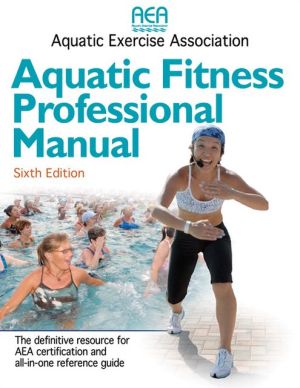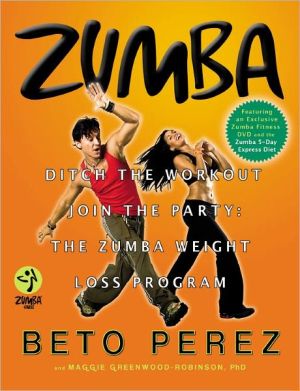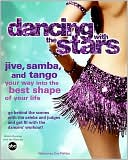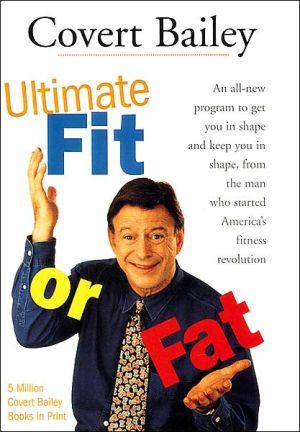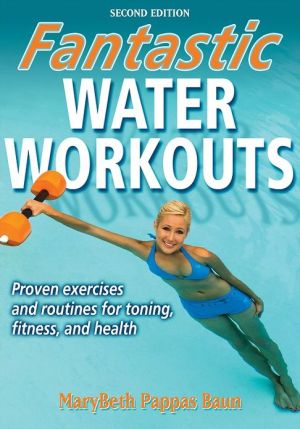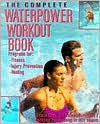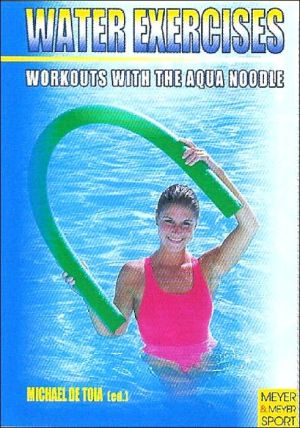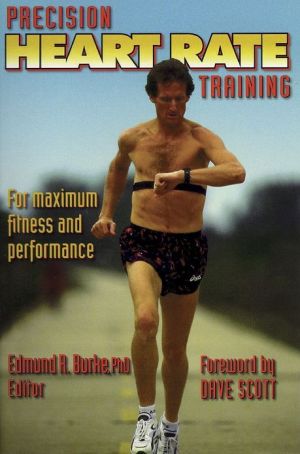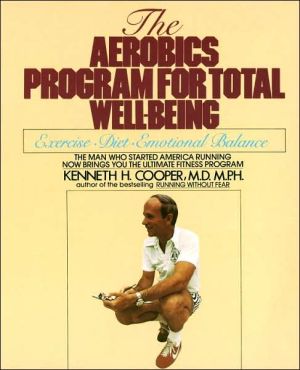Aquatic Fitness Professional Manual - 6th Edition
Written with the expertise of more than 30 industry experts, Aquatic Fitness Professional Manual, Sixth Edition, is the most comprehensive and relied-upon resource for fitness professionals, personal trainers, therapists, and facility or program managers who specialize in water exercise. No longer just for seniors, aquatic fitness has emerged at the forefront of fitness trends as a challenging reduced-impact option for group exercise, small-group fitness, and personal training for all age...
Search in google:
This book is the definitive resource for individuals preparing for the AEA Aquatic Fitness Professional certification exam.
Chapter 1 Physical Fitness Introduction Chapter Objectives Key Chapter Concepts Components of Physical Fitness Cardiorespiratory Endurance Muscular Strength Muscular Endurance Flexibility Body Composition Skill-Related Components of Fitness Guidelines for Exercise Mode of Training Frequency of Training Intensity of Training Duration of Training Flexibility Neuromuscular Exercises Types of Aerobic Conditioning Benefits of Regular Exercise Health Benefits of Regular Exercise Psychological Benefits of Regular Exercise Physical Activity Vs. Physical Fitness Summary Review Questions References Chapter 2 Exercise Anatomy Introduction Chapter Objectives Key Chapter Concepts Structural Organization of the Human Body Systems of the Human Body Anatomical Reference Terms The Skeletal System Classification of Bones Structural Composition of Bone How Bones Grow The Human Skeleton The Muscular System Characteristics of Muscle Tissue Muscle Structure Muscle Arrangements Muscles of the Upper Torso and Extremities Muscles of the Torso Muscles of the Lower Torso and Extremities The Nervous System Organization of the Nervous System The Primary Peripheral Nerves The Respiratory System Organization of the Respiratory System Oxygen Flow in the Respiratory System The Cardiovascular System Organization of the Cardiovascular System Blood Flow and Oxygenation Cardiovascular Terms Summary Review Questions References Chapter 3 Movement Analysis Introduction Chapter Objectives Key Chapter Concepts Anatomical Position Movement Terms Mathematical Definitions of Movement Terms Planes and Axes Levers Types of Joints Spheroidal or Ball and Socket Hinge or Ginglymus Ellipsoidal or Condyloid Saddle Plane or Gliding Pivot or Trochoid Interaction Between the Skeletal and Muscular Systems Movement Considerations The Shoulder Girdle The Shoulder Joint The Elbow Joint The Spine and Pelvic Girdle The Hip Joint The Knee Joint Posture and Alignment Summary Review Questions References Chapter 4 Exercise Physiology Introduction Chapter Objectives Key Chapter Concepts Physiological Principles Overload Progressive Overload Adaptation Specificity Variability/Cross-Training Reversibility Muscle Balance Energy Metabolism Energy Adenosine Triphosophate (ATP) ATP-PCr System Glycolytic System Oxidative System How These Systems Work Together to Supply the Body’s Energy Needs Skeletal Muscle Tissue Sliding Filament Theory Types of Skeletal Muscle Fibers Types of Skeletal Muscle Contractions and Actions Aerobic Exercise Responses Summary Review Questions References Chapter 5 The Aquatic Environment Introduction Chapter Objectives Key Chapter Concepts Heat Dissipation in the Aquatic Environment Water Temperature Humidity and Air Temperature Water Resistance Pool Considerations Pool Depth and Shape Pool Bottom Deck Surfaces Pool Gutters and Ladders Water Quality Air Quality Acoustical Factors Electrical Shock Thunder and Lightning Summary Review Questions References Chapter 6 The Physical Laws as Applied to the Aquatic Environment Introduction Chapter Objectives Key Chapter Concepts Motion Newton’s Law of Motion and Related Concepts The Law of Inertia Total Body Inertia The Water’s Inertia Limb Inertia Drag Viscosity Frontal Resistance Hand Positions—Shape Factors Intensity Alternations With Speed The Law of Acceleration—Changing Velocity Also Affects Effort The Law of Action and Reaction Levers Buoyancy Hydrostatic Pressure Surface Tension Drag and Turbulence Summary Review Questions References Chapter 7 Aquatic Fitness Equipment Introduction Chapter Objectives Key Chapter Concepts Primary Movement and Muscle Actions Terminology and Definitions Pure Movement, Movement on Land, and Submerged Movement Types of Aquatic Equipment and Muscle Actions Buoyant Equipment Weighted Equipment Drag Equipment Rubberized Equipment Flotation Equipment Summary Table for Muscle Actions Selecting and Purchasing Aquatic Fitness equipment Summary Review Questions References Chapter 8 Aquatic Exercise Programming and Leadership Introduction Chapter Objectives Key Chapter Concepts Class Components Warm-Up Component Conditioning and Endurance Phase Cardiorespiratory Endurance Training Muscular Fitness Training Muscular Flexibility and Range of Motion Training Cool-Down Component Program Format Variations Circuit Training Interval Training Aquatic Dance Exercise Deep-Water Fitness Aquatic Step Striding (Water Walk and Jog) Muscular Conditioning Aquatic Kickboxing Ai Chi Aquatic Pilates, Tai Chi, and Yoga Pre- and Postnatal Arthritis Programs Aquatic Personal Training and Small-Group Fitness Instructor Form and Alignment The Art of Cueing Verbal and Audible Cueing Visual Cueing Tactile Cueing Additional Cueing Tips Cueing Style Smooth Transitions to Create Flow Methods for Safe and Effective Instruction Teaching From the Pool Deck Conveying Movement Execution and Weight Transfer From Deck Teaching From in the Pool Teaching From on the Deck and in the Pool Leading the Workout Muscle Balance High-Risk and Ineffective Movements Very Fast Movements (Land Tempo and Double Time) Extended Use of Arms Overhead Very High-Impact Exercise Promoting Muscle Imbalance Prone Flutter Kicks Wall-Hanging Exercises Hip Flexion Versus Abdominal Conditioning Hyperflexion of the Knee Spinal Integrity Proper Use of Equipment Professional Behavior and Attire Summary Review Questions References Chapter 9 Shallow-Water Exercise Introduction Chapter Objectives Key Chapter Concepts Common Choreography Definitions and Terms Base Moves in Aquatic Choreography Choreography Styles or Types Linear Progression or Freestyle Choreography Pyramid Choreography Add-On Choreography Pure Repetition or Patterned Choreography Layer Technique Impact Options for Aquatic Exercise Impact Level Variations Grounded and Anchored Movement Propelled and Elevated Movement Water-Specific Movements Arm Patterns in Aquatic Exercise Music Execution of Movement Land Tempo Water Tempo Half Water Tempo Summary Review Questions References Chapter 10 Deep-Water Exercise Introduction Chapter Objectives Key Chapter Concepts Physiology and Benefits of Deep-Water Exercise Deep-Water Exercise Research Application of Deep-Water Exercise Research Qualifying Participants Managing the Environment Pool Depth Participant Workout Space Water Temperature Air Temperature Pool Entry and Exit Returning to Vertical Position Lifeguard Shoes Equipment Safety Deep-Water Equipment Options Flotation Belts Flotation Vests Flotation Upper Arm Cuffs Flotation Ankle Cuffs Foam Logs Resistance Devices Deep-Water Technique and Alignment Total Immeresion Dynamic Stabilization Center of Buoyancy and Diminished Gravity Archimedes’ Principle Placement of Flotation Equipment Body Mechanics Balance Muscle Balance Planes and Axes Transitions Intensity Alterations Overload and Adaptation Law of Inertia Law of Acceleration Law of Action and Reaction Frontal Resistance Hand Positions Levers Buoyancy Speed Drag Deep-Water Programming and Leadership Class Formats Deck Instruction Music and Tempo Target Market Summary Review Questions References Chapter 11 Special Populations Introduction Chapter Objectives Key Chapter Concepts Older Adults Characteristics Benefits of Regular Exercise Program Considerations Obese Individuals Characteristics Benefits of Exercise Program Considerations Children Characteristics Benefits of Exercise Program Considerations Adolescents Characteristics Benefits of Exercise Program Considerations Prenatal and Postnatal Characteristics Benefits of Exercise Program Considerations Cardiovascular Disease Characteristics Benefits of Exercise Program Considerations Pulmonary Diseases Characteristics Benefits of Exercise Program Considerations Musculoskeletal Disease Characteristics Arthritis Low-Back Pain Syndrome Osteoporosis Metabolic Disease Characteristics Benefits of Exercise Program Considerations Neuromuscular Diseases Immunological and Hematological Disorders Cancer Fibromyalgia Syndrome Chronic Fatigue Syndrome Acquired Immune Deficiency Syndrome (AIDS) Summary Review Questions References Chapter 12 Emergencies, Injuries, and Instructor Wellness Introduction Chapter Objectives Key Chapter Concepts Emergency Action Plans Adapting First Aid, CPRA, and AED Training to the Aquatic Environment Basic First Aid CPR and AED Emergencies Distress and Drowning Sudden Illness Diabetes Mycardial Infarction (Heart Attack) Cardiac Arrest Stroke Epileptic Seizures Heat-Related Illness Lightning Strikes Chronic Injuries Shin Splints Plantar Fasciitis Tendonitis Bursitis Conditions of the Patella (Knee Cap) Back Pain Carpal Tunnel Syndrome Stress Fractures Swimmer’s Ear Fitness Professional Wellness Lifeguard Lung Disease Overtraining Vocal Use and Abuse Summary Review Questions References Chapter 13 Basic Nutrition and Weight Management Introduction Chapter Objectives Key Chapter Concepts General Nutrition Nutritional Components Putting It All Together Dietary Guidelines for Americans USDA Food Guide Common Nutritional Concerns Cancer Risk Reduction Heart Disease, Atherosclerosis, and Blood Cholesterol Osteoporosis Hypertension Iron Deficiency and Iron Deficiency Anemia Weight Management Theories of Obesity Eating Disorders Weight-Management Strategies Behavior Modification Motivation Goal Setting To Refer or Not to Refer? Good Things to Know Helpful Internet Resources Summary Review Questions References Chapter 14 Health Risk Appraisal and Physical Screening Introduction Chapter Objectives Key Chapter Concepts Health History Risk Factor Assessment Physician’s Consent Additional Medical Concerns Physical Screening Health-Related Screening Resting Heart Rate Blood Pressure Postural Assessment Physical Fitness Screening Body Composition Cardiorespiratory Fitness Muscular Fitness Flexibility Aquatic Fitness Assessments Interpretation of the Health Risk Appraisal and Physical Screening Process Summary Review Questions References Chapter 15 Exercise Behavior Introduction Chapter Objectives Key Chapter Concepts Exercise Dropout Attributes and Psychology of Exercise Behavior Exercise Adherence and Compliance The Law of Cause and Effect The Law of Attraction Exercise Self-Efficacy Locus of Control Motivation Personality and Exercise The Transtheoretical Model Exercise Dependency Facilitating Behavioral Change Behavioral Modification Strategies Facilitating Exercise Knowledge Summary Review Questions References Chapter 16 Business Issues and Legal Considerations Introduction Chapter Objectives Key Chapter Concepts Labor Status and Business Structures Employee Independent Contractor Sole Proprietorship Partnerships Limited Liability Company (LLC) Corporations Insurance Risk Management Standard of Care Liability Duty Negligence Informed Consent Release and Waiver of Liability Injury Report Form Music Use in Fitness Programs Americans With Disabilities Act Summary Review Questions References
